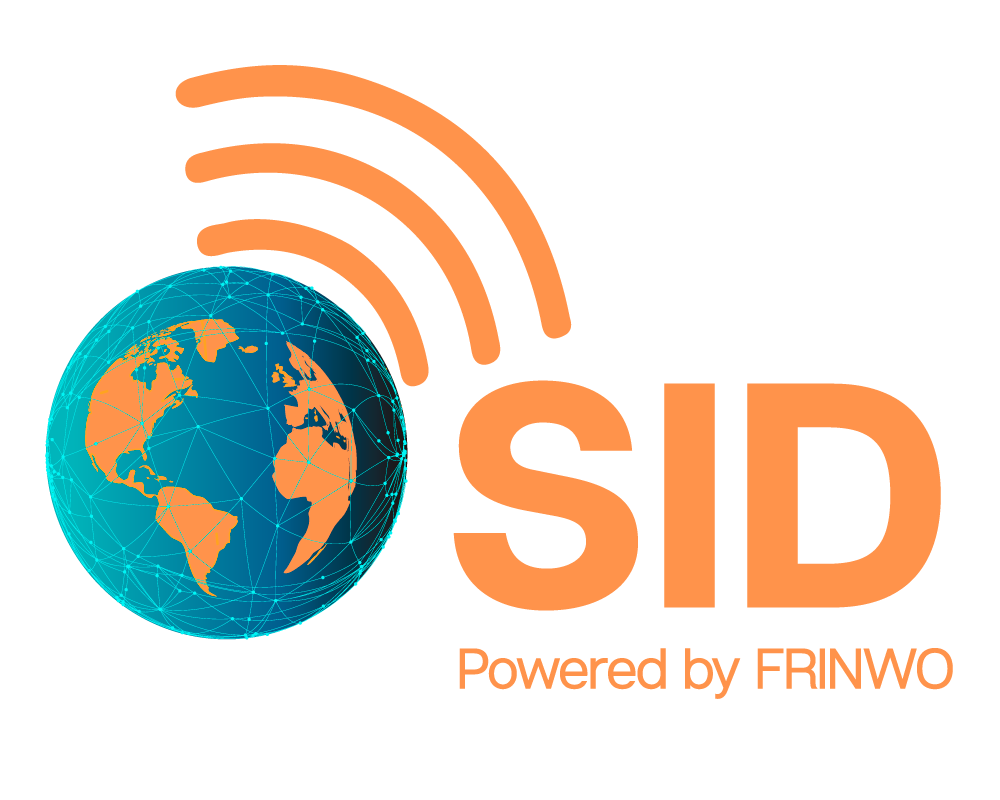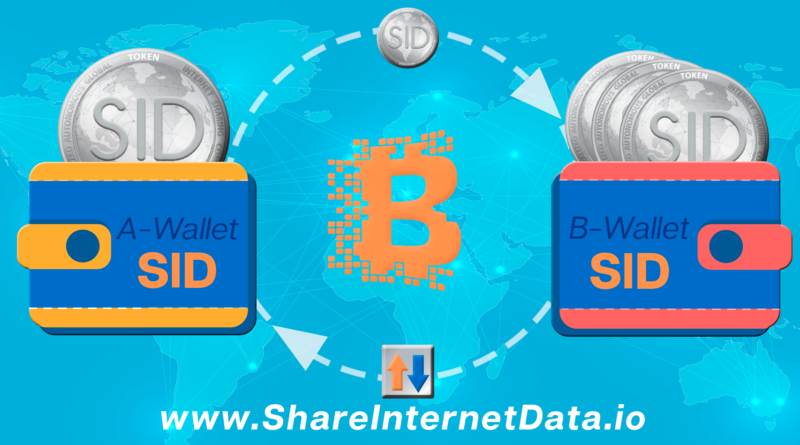Blockchain based micropayment system by SID limited

About SID Limited
Share Internet Data or simply SID for short, is a blockchain enabled peer-to-peer and peer-to-multi-peer internet sharing eco-system that will allow sharing internet from one person’s Smartphone or Tablet to another. SID Ltd, registered in Gibraltar, products are based on patent pending technology which allows the extreme of de-centralization, in the true sense of the word. Meaning: it is the end-user ofdecides everything, in the SID APP settings, if it shares his internet and what type of internet he shares, be it Wi-Fi internet or Mobile data internet. Also, it´s the SID end-User who decides, in the SID APP settings, if it enters a Wi-Fi password in the SID APP to share that specific Wi-Fi with all the SID community OR if it charges tokens for sharing that specific Wi-Fi internet twitch another SID Users. For example, if it charges for the sharing of its private home Wi-Fi internet through the SID blockchain which encrypts that Wi-Fi password between servers and SID APPs. This last will allow other SID users to connect directly to that home Wi-Fi in exchange for SID Tokens for consumed internet data. Another alternative that SID users have is not to enter their home Wi-Fi password in the SID system and only share their home Wi-Fi through his smartphone thus protecting his own internal wireless network from potential abuse
The mission of SID is “To lift as many people out of poverty as possible, by means of giving those less fortunate a way to access free internet through nearby Users smartphones or tablets who Share Internet Data with other nearby SID Users.” This will be achieved by allowing the less fortunate to consume Ads through the SID APP and SID will than provide instantly Tokens in exchange for consumed Ads. SID will provide those Tokens to the User by SID purchasing them from the public Token exchange in bulk for Users or if none are for sale than it will provide it out of the Company Token pool and purchase those number of Tokens on a future date. The Company will get paid by the 3rd party Ads firms at the end of the following month, thus requiring at least 2 months working capital, whereas the user gets his Tokens as soon as he finishes consuming Ads. Meaning the User can start using those Tokens for which he didn’t pay not even a penny and can start receiving shared internet data from other nearby SID Users smartphones or Wi-Fi on the SID network and pay with those Tokens.
We would welcome anyone to join us at our SID Limited website by clicking here, and in our website click on “Whitelist” and to subscribe with your email and be kept informed on updates of our project. Currently SID technology is available to end-users in Spain through the APP of a franchise of Dunkin Coffee, called Dunkin Donuts. SID also released in Feb. 2018 its first SID branded commercial APP on the Play Store without micropayment, free to use where nobody gets paid for sharing its internet but allows users to evaluate our patented technology.
Blockchain Technology
Blockchain has been around for a few years now despite it sounding so new and picking up pace recently, lot of people know it for different reasons and usages. There are not many scholars who attempted to define and explain Blockchain, it has been defined by Hamida, Brousmiche, Levard & Thea, 2017 as “a peer to peer, distributed, trustless database that serves as an irreversible and incorruptible information repository”. For the first time ever “Blockchain enables unrelated people to reach consensus on the occurrence of a particular transaction or event without the need for any controlling authority”, Wright and De Filippi (2015).
This technology brings forth a paradigm shift in the way applications of the future will be built, deployed, operated, consumed and marketed. Its uniqueness has foundation in its key attributes such as resilience, anonymity, security, fault tolerance and its auditability making it immutable as each chain is encrypted and verified by majority consensus of the participants. Over and above the change in how business is conducted, Blockchain brings forth a new era which promotes greater participation in global payment systems and digital assets whereby participants would not have been able to collaborate without the enabling central authority leading to a decentralized governance, Wright and De Filippi (2015).
The most popular Blockchain technology extension which also seems to be its key enabler is the invention of smart contracts. Hamida et al., 2017 state that “smart contracts extend use of block chain technology to transaction processing, through automation of business processes and workflows”. Its power of coordination allows for interconnection and simultaneous execution of multiple smart contracts. Wright and De Filippi (2015) stated that smart contracts work on rules that are preset and automatically self-executed with no need of human intervention. Through use of cryptographic tokens which can represent value or ownership it enables business transactions to exchange value thus allowing participants to trade goods and services automatically and record these transactions in the Blockchain ledger unfolding a new peer to peer economy.
The peer to peer economy has succeeded so far as more and more actors have now been able to exchange digital assets in the crypto currency market place, thus by extension making Blockchain technology more accepted and trusted. Hamida et al., 2017 found that the potential benefit of decentralized market places reduces cost by removal of fees charged by the third-party leading to empowerment of end users, peer conflict arbitration and better control in data sharing. Stanford economist Susan Athey noted that digital currencies expands international commerce and supports financial inclusion. Wright and De Filippi (2015) observed that it can reduce merchant fraud, expand global remittance through cheaper and faster bank transfers by unleashing banking and e-commerce to third world countries.
Electronic Payment Systems
The advent of electronic commerce has globalized trade, it has increased the volume of business transactions to the extent that very small value transactions need to be made instantly, automatically and online in a matter of seconds. This requirement of exchanging value less than cents of a dollar has not been so feasible as sometimes the cost of that transaction is greater than the transaction volume, thus to resolve it different electronic payment systems were invented.
The two commonly used electronic payment systems are Micro and Marco payment systems, where its only difference is the value of exchanges. The security requirement on the marco payment system more robust as it is used to transfer large sums thus use public key crypto-system for encryption and authentication. Online broker is used to detect and reduce double spend prior to payment acceptance, requiring both customer and suppliers to connect online and verify each transaction leading to delays in transactions processing, Hwang, & Sung. (2006).
In the case of micro payment systems, the storage and computational cost must be kept at negligible minimum to be feasible and allow of transactions to be processed at a fractional cost. Baruffaldi & Sternberg. (2018) found an issue that affects all micropayments system in that electronic coins can only be spent on a specific underlying-coin-merchant thus limiting the flexibility of use. These are the limitations that can be resolved through various Blockchain use cases and developed by businesses such as SID who not only aim to solve the problem but extend it into a viable business opportunity and contribute to the United Nations objective of poverty reduction.
If you want to be part of the SID project, please subscribe to SID in our website or follow us in our SID Telegram group.
Halkano, James & Kate (2017) found that African mobile network operators such as MTN and Safaricom have come up with payment systems to enable sending of money between individuals as well as paying for goods and services using a mobile phone. It has increased the penetration of financial services to the poor who were locked out of the traditional financial services offered by the banks. Despite significantly expanding access of financial services, these payments systems cannot be equated to micropayment as the transaction charges are still prohibitive and its only used to send and receive money.
Blockchain based micro payment systems have the potential to resolve most of the issues that affect the current micropayment systems looking at its success in enabling e-commerce based on cryptocurrency such as bitcoin. Dr Ibrahim Halkano, PhD believes that micropayment systems of the future will be built on Blockchain to cater not only for the volume and value of transactions but for the potential to enable users to earn income through Ad consumption as an incentive. That last will significantly increase adoption and usage through future SID APP updates.
In the case of SID, it was at a certain point in the development, a question of if the technical solution was even possible as the SID eco-system required a micro-payment system that would allow payments as low as 1 cent of a $US, Euro, or Pound Sterling. When considering an average price of say for example, to bring developing countries in line with western countries internet data pricing of 1 EURO for 1 Giga Bytes (GB) of mobile internet data and knowing that a minimum required to allow a user to send and receive texts and browse the internet even to the most basic sites is around 10 Mega Bytes (MB). Consequently, 10MB of mobile internet data would need to be charged to SID users at 1 cent EURO per 10 MB data blocks and that when considering millions of users would require a capability of in the millions of micropayments transactions.
We were at a loss and desperate as traditional methods like bank transfers or credit or debit cards would not allow such small amount of fiat money in such big numbers of transactions. Than we looked at the most known blockchains as Bitcoin and Ethereum and quickly concluded that the cost of transactions was abusively high and in most cases were higher than the equivalent fiat amount. Actually, the lowest transaction cost of Bitcoin and Ethereum was Ethereum with at the beginning of 2018 was still around $US 0.16 which is 16 times higher than the minimum transfer that SID micropayment is intending to allow its users. Finally, to make matters worse, the time to confirm a transaction was not instant but takes up to hours AND to finish it all off the number of transactions if we would add extra millions of transactions on top of those first mentioned blockcains would not be feasible.
So, the conclusion was we develop our own blockchain or we select more progressive blockchains like for example Stellar, or possibly BIX Ledger or our own. In so far on transaction costs Stellar published figures state a cost of $US 0.01 every 100 thousand transactions (so near to zero cost), and they can manage 30 thousand transactions per second (= almost 2.6 million transactions per day)and clear a transaction on average in 4 to 5 seconds. That means Stellar allows fractions of crypto tokens which are the equivalent of 1 cent EURO and at virtually no cost on a single transaction basis so is the best candidate for build the SID micropayment system on top of. In fairness SID would not exist if it wasn´t for the Blockchain technology, exactly for the reason explained before, so blockchain is a technology that SID simply can´t be without in the long run to implement on his mission.
If you want to join SID to help us lift more people out of poverty by enabling them to access internet shared by other SID smartphone users, go to our website. SID believes that it will transform the telecoms industry with this novel blockchain enabled micropayment eco-system making it hard to separate SID from a service provider or from a future modern era banking enabler for the less fortunate, allowing them to take part in the growth as well as the wealth created by the sharing economy, which is exactly what the internet did years ago in the developed countries.
About the Authors
Dr Ibrahim Halkano, PhD is an expert in Blockchain micropayments and ERP Systems.

Jose Merino is the Charmian of SID Limited, an expert in Telecommunications.
References
Baruffaldi, G., & Sternberg, H. (2018, January). Chains in Chains-Logic and Challenges of Blockchains in Supply Chains. In Proceedings of the 51st Hawaii International Conference on System Sciences
Halkano, A. I., James, N. M., & Kate, L. (2017) Culture, Adoption and Usage of Mobile Financial Services THE INTERNATIONAL JOURNAL OF BUSINESS & MANAGEMENT. Vol 5(4)
Hamida, E. B., Brousmiche, K. L., Levard, H., & Thea, E. (2017, July). Blockchain for Enterprise: Overview, Opportunities and Challenges. In The Thirteenth International Conference on Wireless and Mobile Communications (ICWMC 2017)
Hwang, M. S., & Sung, P. C. (2006). A study of micro-payment based on one-way hash chain. IJ Network Security, 2(2), 81-90.
Wright, A., & De Filippi, P. (2015). Decentralized Blockchain technology and the rise of lex cryptographia.
— END —


